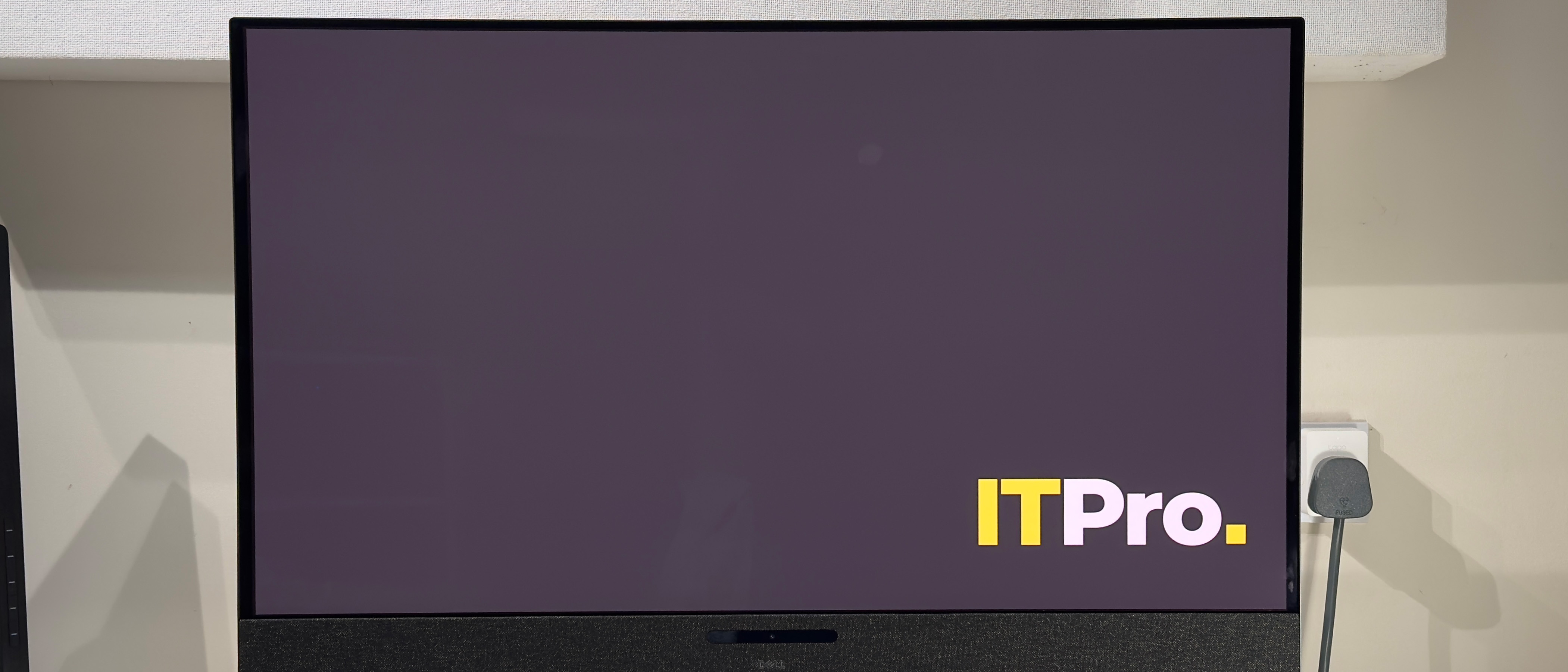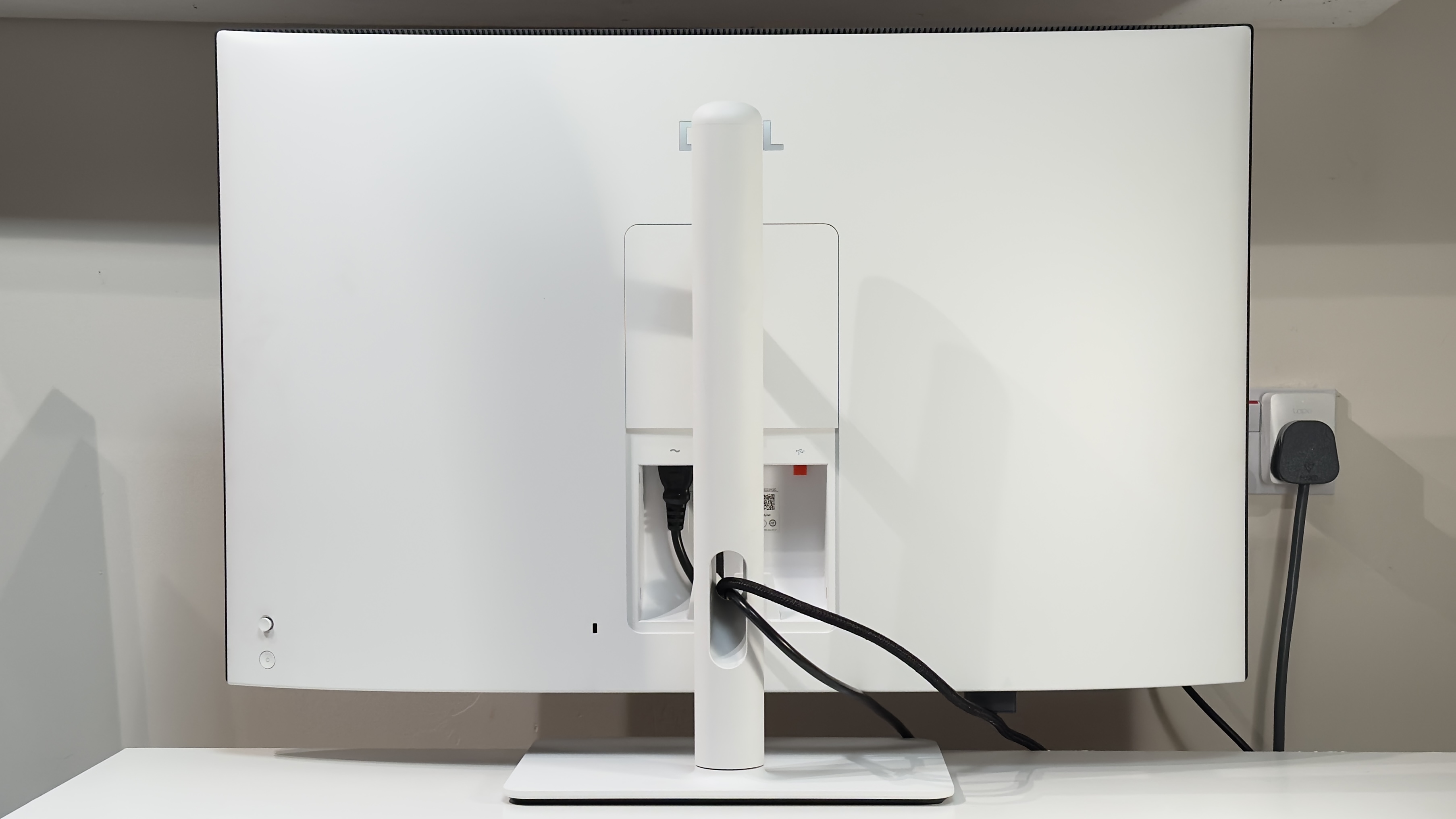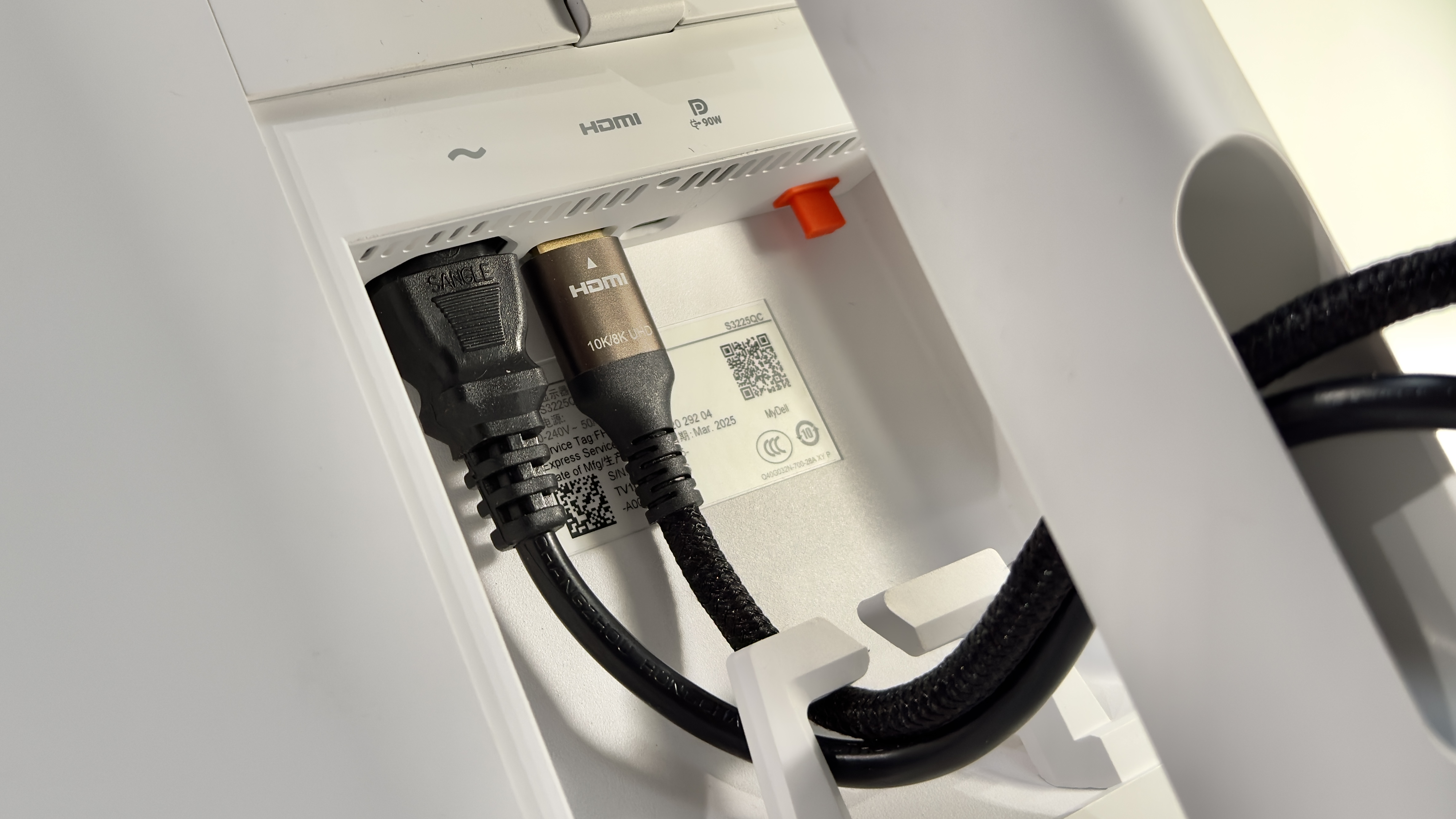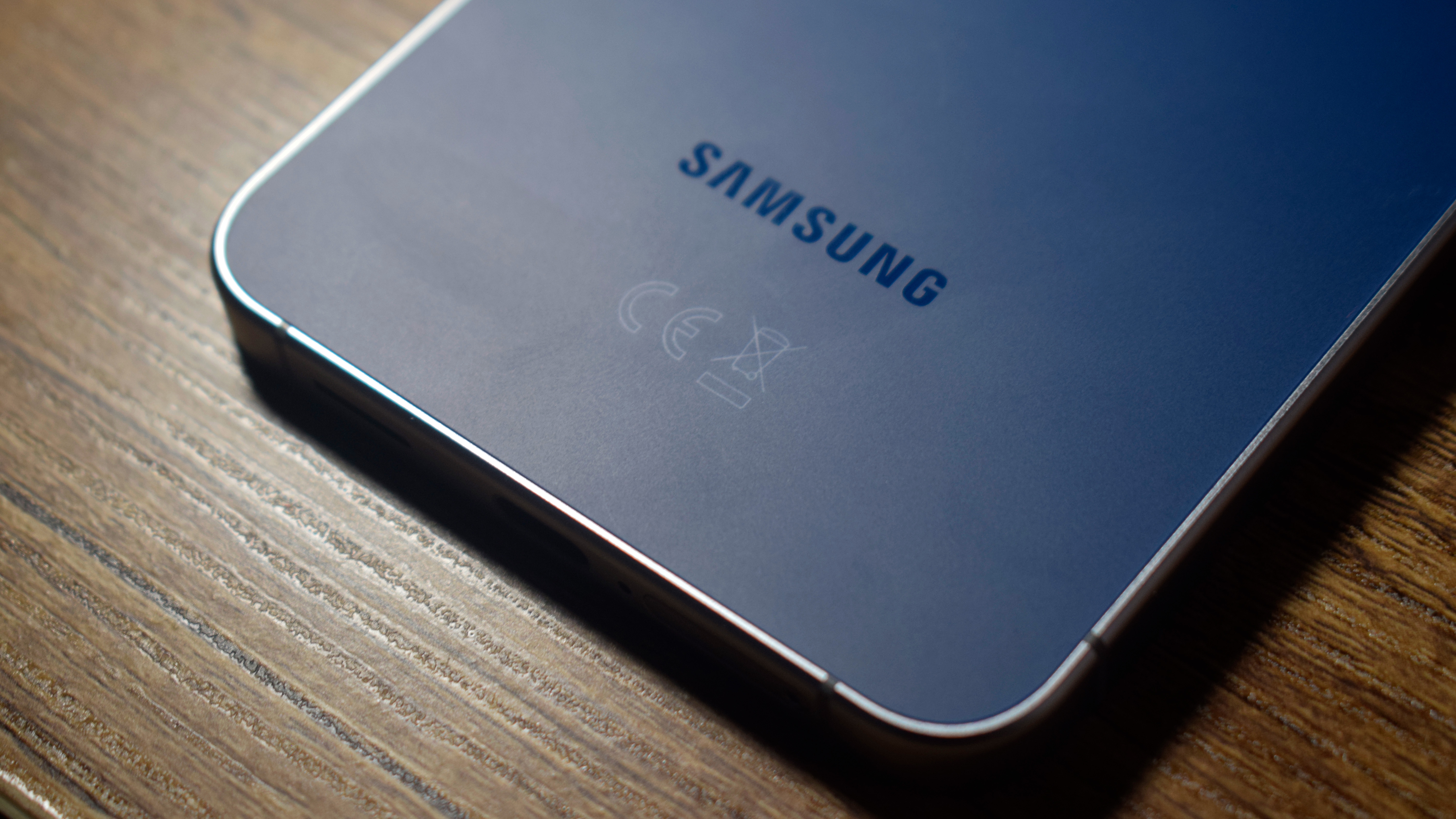Time for an upgrade? Join the QD-OLED with the Dell 32 Plus S3225QC monitor
Superb image quality and silky smooth motion make a glorious combination – but it’s not a perfect productivity monitor

-
+
Great image quality in SDR and HDR
-
+
Good integrated speakers
-
+
Dolby Vision
-
-
Limited connectivity
-
-
Coil whine is annoying
-
-
Potential burn-in issues

If you've daydreamed about sneaking your OLED TV into the office, then the Dell 32 Plus S3225QC may be just what your IT budget has been waiting for. Housing a 31.6-inch QD-OLED panel in a stylish consumer-friendly package, the S3225QC promises precise colour reproduction and stunning image quality for work and play.
Not to be confused with its IPS-panelled sibling, the Dell 32 Plus S3225QS, the S3225QC harnesses the power of the latest QD-OLED tech. You get a panel which covers a claimed 99% of the DCI-P3 color space, a peak brightness of 1,000cd/m2 for HDR content, Dolby Vision support, and a stunningly sharp 4K 120Hz panel with AMD Freesync Premium certification. The cherry on top? You also get a five-channel audio system that supports spatial audio for pseudo-surround sound.
On paper, the Dell looks like a monitor that's ready to straddle the office and gaming divide with ease. The issue, however, is that there are just enough flaws to make some buyers think twice.
Dell 32 Plus S3225QC monitor: Design & Features
The S3225QC's styling is a tad unconventional. In fact, it's more akin to a small TV with built-in soundbar than your usual PC monitor. The thin bezels, dainty off white stand, and smoothly curved rear look lovely, and a little plastic cover clips over the ports to give an even cleaner look from behind. A thick strip of fabric beneath its lower bezel hides the five speaker drivers and, in the centre, there's a presence sensor which, in tandem with Dell's Spatial Audio features, attempts to tailor the sound to wherever you're sitting.
It's clearly a design that's intended to look good from any angle – and it does. This is partially helped by the frugal amount of connectivity, though. The ports are located centrally at the rear, and all you get is a single HDMI 2.1 port, a single USB-C 3.2 Gen 1 upstream port with DisplayPort Alt 1.4 support, and a downstream USB-C 3.2 Gen 1 port. The usual cutout in the stand combines with the clip-on cover to make the cables exit neatly from the rear.

If you're hoping for any USB-A ports, however, you're out of luck. Feel carefully under the monitor's front lip and – similar to the smaller Dell UltraSharp U2725QE – an upwards click sees a little panel pop out with a single front-facing USB-C 3.2 Gen 1 port.
Needless to say, connectivity is probably the S3225QC's biggest weakness. With a panel this good, you'll definitely want to hook up more than just your PC. With only one HDMI input, you'll either have to spring for an external HDMI switch or just get used to plugging and unplugging cables. It's a frustrating compromise.
Sign up today and you will receive a free copy of our Future Focus 2025 report - the leading guidance on AI, cybersecurity and other IT challenges as per 700+ senior executives
The speakers built into PC monitors don't usually warrant a mention – or any music, for that matter – but the S3225QC is a welcome exception. The five speaker drivers along the panel's front edge are powered with 5 watts of power apiece. They work in tandem with Dell's Spatial Audio feature, which uses AI-driven head tracking and advanced beamforming technology to simulate surround sound, and it's fair to say that the result is a far cry from the usual tinny noise produced by most PC monitors.
The sound is surprisingly spacious, especially so with game and movie soundtracks, and there's enough oomph to make everything from audiobooks to music to movies and games sound respectable. There's no deep bass, nor oodles of detail, but as long as you keep the volume level sensible, there's enough clarity and volume to mean that you won't be desperate to resort to external speakers or headphones.
The presence sensing sounds like a clever idea, but it was less impressive in practice – it didn't seem to do much other than move the audio to the left or right of the monitor. Audio does sound more full-bodied with the spatial audio feature enabled, though, so you're best to leave it on. We would advise disabling the notifications that tell you when the sensor can't detect where you're sitting, though. If you're regularly moving around your desk, the regular onscreen pop-ups are distracting.
Dell 32 Plus S3225QC monitor: Display quality
Given the presence of a QD-OLED panel, you may have assumed that image quality is a highlight – and you'd be right. From the off, the S3225QC's QD-OLED panel serves up perfect, inky blacks, near-perfect contrast, and a sumptuous palette of color. It looks stupendous. It is rather wasted on productivity apps, but photos, videos, and games look stunning. And frankly, even the Windows desktop looked amazing, with our familiar clusters of icons floating vividly on top of a black desktop background.
Dell claims that the panel covers 99% of the DCI-P3 color space – and our tests agreed. We measured the panel as covering 99% of DCI-P3, 95% of Adobe RGB, and 100% of sRGB. There are preset modes for sRGB, DCI-P3, and Display P3, but sadly not Adobe RGB.
The Standard picture mode provides a fairly close match for a Display P3 target. We measured an average Delta E of 1.26, a peak Delta E of 3.21, and our colorimeter reported an infinite contrast ratio. The only obvious image quality issue is that whites do look very reddish on the S3225QC: the measured white point of 6,076k is quite a way off the 6,500k ideal.
We also tested the S3225QC's Creator modes – these provide factory-calibrated settings for Display P3. DCI-P3 and sRGB color spaces, which is a nice touch. All of these presets improved color accuracy over and above the Standard mode, with an average Delta E of around 0.5 and maximum deviations of ~1.5. The white point remained noticeably too warm and reddish for the sRGB and Display P3 profiles, though, which is a tad disappointing. If accuracy is key, then you'll need to perform a software calibration with a third-party colorimeter.
As you'd expect for an OLED panel, Dell's HDR performance is good. You even get Dolby Vision support, which is something of a rarity, in addition to the usual HDR 10 compatibility. In the standard DisplayHDR True Black mode, we recorded a peak brightness of 451cd/m2. Switch to the HDR Peak 1000 mode, however, and – you guessed it – the peak brightness soars to 996cd/m2.
That said, you'll only achieve this peak brightness on very small, localised highlights. And only for a short time. In our testing, the brightness peaked at 996cd/m2 for a small bright spot, but dropped back to 848cd/m2 after a few seconds. That means you'll get really punchy highlights in darker scenes – such as the nighttime city vistas and fireworks displays you'll so often see in HDR demos – but in bright outdoor scenes, the overall image brightness will be far lower as OLED technology struggles with full-screen brightness levels.
Indeed, while OLED screens are brilliant at relatively small, localised highlights, they aren't that bright per se. For instance, the Dell's default brightness is set at 75%, and this provides a peak brightness of 163cd/m2. That's a little bright for all-day office usage, but it does look rather dim for movies and games. And especially so if, like us, you have daylight streaming in the windows.
Crank the Dell to maximum brightness, and it tops out at a modest 239cd/m2, which is dramatically lower than monitors that use traditional LCD backlights. What does this mean in practice? Well, if you want a monitor that'll handle bright rooms which get a lot of sunlight, then the Dell may begin to look a bit dim – and even more so with HDR content.
When it comes to motion clarity, however, the Dell's WD-OLED panel is glorious. The 120Hz refresh rate is matched with support for AMD Freesync Premium, and this provides an adaptive range from 48fps to 120fps. In our usual SmoothFrog tests, the Dell put in one of the cleanest performances we've seen. Motion was silky smooth throughout the framerate range, and the 0.33ms claimed response time translated to a perfectly crisp onscreen movement. We tested the Dell with a variety of games, and the result was stunning: no blur, no smear, no overshoot. In fact, it made the 120Hz IPS Black panel in the Dell Ultrasharp U2725QE look decidedly blurry and smeared.
Uniformity is a strong point for OLED panels, and the S3225QC is no exception. Every one of the 24 zones varied by less than 1% for both brightness and contrast. Absolute perfection, in other words. Unlike IPS panels, which vary by as much as 10-15% across the panel, the QD-OLED panel looks completely even and uniform from corner to corner.

We're reluctant to end on a bum note, but there are a couple of concerns. If you have the brightness set at 75% or above, the panel buzzes audibly when displaying white or light grey backgrounds across more than half the panel. This is because of the way QD-OLED works: to create white, it has to send maximum voltage to all the red, green, and blue subpixels, so we suspect that the noise is the power supply capacitors creating a common phenomenon known as coil whine.
You have two options to quieten the buzz. Either snap the offending app to one half of the screen, or drop the brightness to 50%. The former option may not be desirable, and the latter drops the panel's peak brightness right down to 130cd/m2. Admittedly, that's a sensible level for sensibly-lit offices, but it may not work for everyone. And frankly, there shouldn't really be any audible buzz in the first place.
The other key issue to consider with QD-OLED is the high likelihood of burn-in or image retention. This is where the shadow of static onscreen elements, such as menus, taskbars, desktop icons, and so on, can be permanently 'burned' onto the screen itself. Dell actually mentions the issue in the troubleshooting section of the user manual, where it advises users to set the screen to go into standby after a few minutes of idle time. It also recommends users use a dynamic rather than a static screensaver.
Like most OLED panels, the S3225QC has a panel maintenance option in the menus. A panel health indicator gives you some indication about when it's necessary to run the pixel refresh cycle: a green dot means it's healthy, a yellow dot means you should run the Refresh cycle, and a red dot means you've used the panel for 7000 hours without ever running one. That's unlikely to occur, though, as the panel runs the refresh after every 4 hours of use – once the panel goes into standby, or you manually press the power button, it'll automatically trigger the process.
Dell 32 Plus S3225QC monitor: Is it worth it?
We really wanted the S3225QC to hit an emphatic home run, to be honest. With one of Samsung's excellent QD-OLED panels housed in a typically handsome Dell design, we really didn't think the 32 Plus could put a foot wrong. In reality, though, it's not the perfect do-it-all monitor you might be hankering for.
The lack of connectivity is a huge blot on the S3225QC's copybook; the incessant buzzing with full-field white is hugely annoying for productivity; and the reality of OLED burn-in is a valid concern for long-term office usage. And frankly, we wonder how much value the speakers really add to the package. Cut the speakers – and the price – and it'd be even easier to overlook the flaws.
If this all sounds relentlessly negative, then let us be clear: the image quality is brilliant, and the price is really very reasonable. If you can live with the limitations, then your eyes are in for an absolute treat.
Dell 32 Plus S3225QC specifications
Display | 31.6in QD-OLED panel | Row 0 - Cell 2 |
Panel resolution | 3,840 x 2,160 | Row 1 - Cell 2 |
Refresh rate | 120Hz | Row 2 - Cell 2 |
Panel response time | 0.03ms GtG | Row 3 - Cell 2 |
Adaptive Sync Support | Yes, AMD FreeSync Premium Pro | Row 4 - Cell 2 |
HDR Support | Yes, DisplayHDR True Black 400 | Row 5 - Cell 2 |
Ports | HDMI 2.1 x 1, USB-C 3.2 Gen 1 x 1 (upstream, DisplayPort Alt 1.4), 2 x USB-C 3.2 Gen 1 x 2 (downstream, up to 15W) | Row 6 - Cell 2 |
Other features | USB PD (up to 90W) | Row 7 - Cell 2 |
Stand | Ergonomics -5~21° tilt, 110mm height adjustment | Row 8 - Cell 2 |
Dimensions (with stand) | 719 x 504-614 x 224mm | Row 9 - Cell 2 |
Weight (with stand) | 10kg | Row 10 - Cell 2 |
| Row 11 - Cell 0 | Row 11 - Cell 1 | Row 11 - Cell 2 |
| Row 12 - Cell 0 | Row 12 - Cell 1 | Row 12 - Cell 2 |
Sasha is a freelance journalist who's been writing about tech and consumer products for over two decades. With a career that started at the dawn of the millennium on Computer Buyer magazine, he passed through the official Intel Centrino magazine, Mobile Computer, before rounding off his print career on PC Pro magazine where he reviewed a broad spectrum of hardware and software before eventually specializing in laptop and monitor reviews. After the best part of a decade, he defected to the desks on the other side of the office and spent many years working on Expert Reviews before finally going freelance in 2024. Nowadays, he splits his time between reviewing tech and home appliances, falling off mountain bikes and cleaning up his kids' playroom.
-
 UK firms aim for growth through AI investment but lack of talent is a concern
UK firms aim for growth through AI investment but lack of talent is a concernTech training and upskilling will be a major focus in 2026
By Emma Woollacott Published
-
 Samsung unveils plan for AI transformation across all devices
Samsung unveils plan for AI transformation across all devicesBoth the DS and DX divisions of the business are profiting from the AI boom
By Jane McCallion Published
-
 ‘1 engineer, 1 month, 1 million lines of code’: Microsoft wants to replace C and C++ code with Rust by 2030 – but a senior engineer insists the company has no plans on using AI to rewrite Windows source code
‘1 engineer, 1 month, 1 million lines of code’: Microsoft wants to replace C and C++ code with Rust by 2030 – but a senior engineer insists the company has no plans on using AI to rewrite Windows source codeNews Windows won’t be rewritten in Rust using AI, according to a senior Microsoft engineer, but the company still has bold plans for embracing the popular programming language
By Ross Kelly Published
